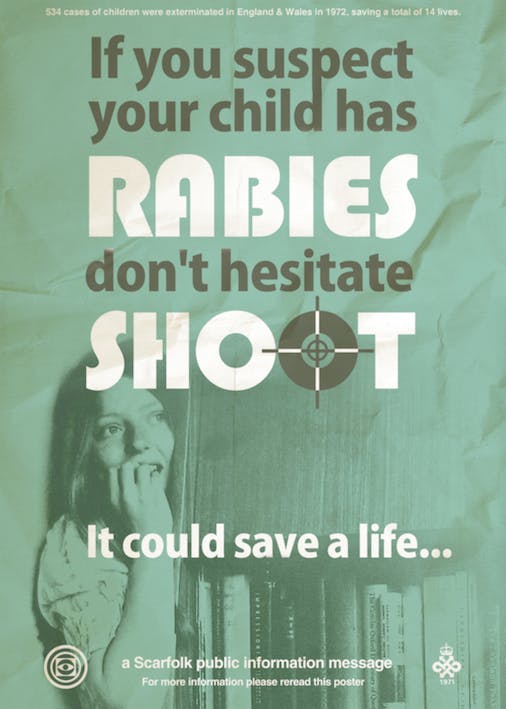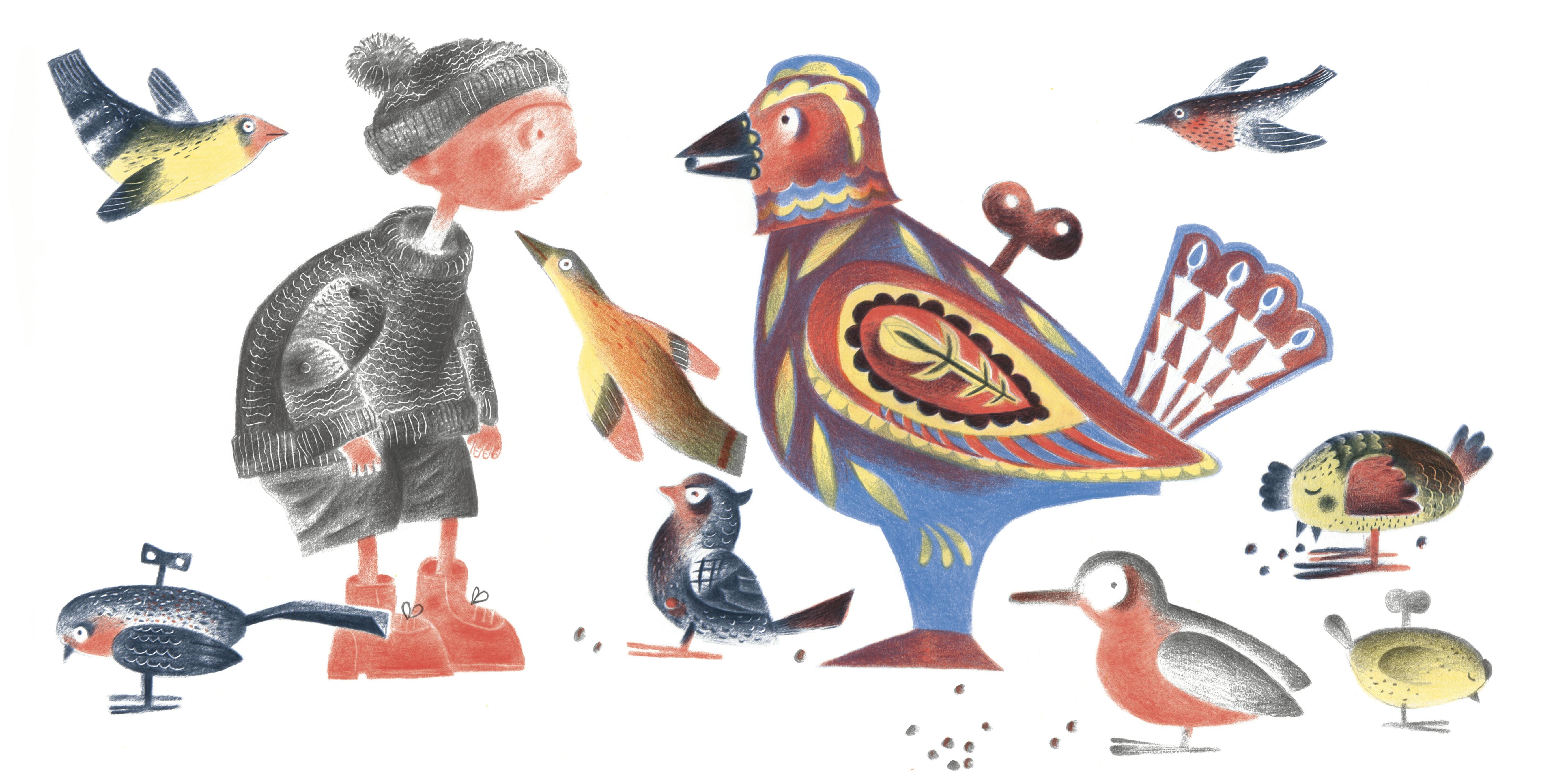Rabies, redesign and a fictional town called Skarfolk
Launched in 2006, Varoom is an illustration magazine with a dedicated following in the industry. The new editor, Olivia Ahmad, wants to expand readership beyond the illustration world, re-launching the magazine in a thicker, more satisfyingly book-like format.
A curator at House of Illustration, the UK’s only public gallery devoted to illustration and graphic art, Olivia is motivated by a belief that illustration is, and always has been, the art form most reflective of contemporary life. “You can look at broader societal issues through the prism of illustration because it’s very tangibly connected with commerce,” she explains. “It doesn’t exist in its own little world in the way that art does. If you stepped outside right now you’d see twenty illustrations as soon as you got out the door.” Varoom’s editorial intention is for every issue to take a snapshot of illustration at that moment in time; the way Olivia sees it, that’s a snapshot of the way we live now.
The theme for the redesigned issue is nostalgia. Longing for the past at precisely the moment you’re moving a publication into the future is perhaps counterintuitive. But then again, nostalgia might be our most ‘current’ national mood; the feeling ultimately responsible for our ongoing political nightmare. Olivia has always been unnerved by a trend in mainstream illustration towards nostalgic imagery that feeds a right-wing agenda. “Look at the Great Western campaign: it’s a take on Enid Blyton’s famous five. That pisses me off. It’s no secret that her books are xenophobic and racist, people even said that when she was writing them!”
The smaller format of the magazine allowed the team to increase the page-count by a third, and amongst the wealth of imagery here certain features stand out. In one painful series, illustrator Serena Katt reckons with the legacy of her grandfather, who grew up in Nazi Germany as a member of the Hitler Youth. Another feature looks at the work of Richard Littler, who has created a fictional English town called Scarfolk that’s perpetually stuck in the past.
Olivia gave us a guide to the new issue via four of her favourite illustrations.

Scarfolk, Richard Littler
“Richard Littler is a graphic artist and the creator of a dystopian fictional British town called Scarfolk that’s perpetually stuck in the 1970s — it’s a comic satire of the period, but its messages merge into the present day, too. Richard has a blog that’s the imaginary website for Scarfolk Council where he posts mock public information posters like this one that instructs you to do away with your children if you think they might have rabies. Richard’s designs are a perfect pastiche of British public office graphics from the 1970s, so much so that this poster was accidentally published in the UK government’s Civil Service Quarterly in an article about the history of government communications — the Cabinet Office had to issue a statement to admit their mistake.”

Utopian Fantasy, Ignasi Monreal, Gucci
“We see fashion photography all the time, but fashion illustration is far less ubiquitous. Gucci have long been champions of forward-looking fashion illustration, and for their spring/summer 2018 campaign they didn’t use any photography at all. Illustrator Ignasi Monreal created a series of stunning digital paintings that, as our fashion editor Zoë Taylor explains, ‘mash up imagery from Old Master paintings with pop-cultural, alchemical and post-internet references’. Zoë reflects that this might be a view of things to come; fashion brands using illustration’s potential for storytelling to create campaigns full of drama and tension that go beyond the straight-up representation of clothes.”

Hansel & Gretel, Clive Hicks-Jenkins, Design for Today
“I’m completely obsessed with Clive Hicks-Jenkins’ work — the way he crafts images is just so beautiful. I interviewed him about his recent retellings of the fairytale Hansel & Gretel. As Clive says, the original story is “dark and brutal”, full of horrifying neglect, abuse and murder — his versions have drawn that out in different ways. He directed a theatre production at the Barbican last year that was a combination of live music and narration, animation and puppetry. The production set Hansel and Gretel in a conflict zone that they flee from only to become groomed for trafficking. The libretto for the performance was written by the poet Simon Armitage and has been illustrated by Clive for a book that will be published later this year — that’s where this illustration comes from.”

Sunday’s Child, Serena Katt, Jonathan Cape
“Serena Katt’s upcoming graphic novel is a really bold investigation into her own family history. Serena’s German grandfather spent his entire childhood in Nazi education facilities in the 1930s and 40s. When he died he left behind a short and fairly positive written record of his life — Serena wanted to build a fuller picture, so she interviewed her family and did research at the German Federal Archives. In her book, Serena includes her grandfather’s positive memories, but challenges them too. Here his recollections about his first day of school and how much he loved drawing are undercut by Serena’s question: ‘But are there no children who disappear overnight?'”




